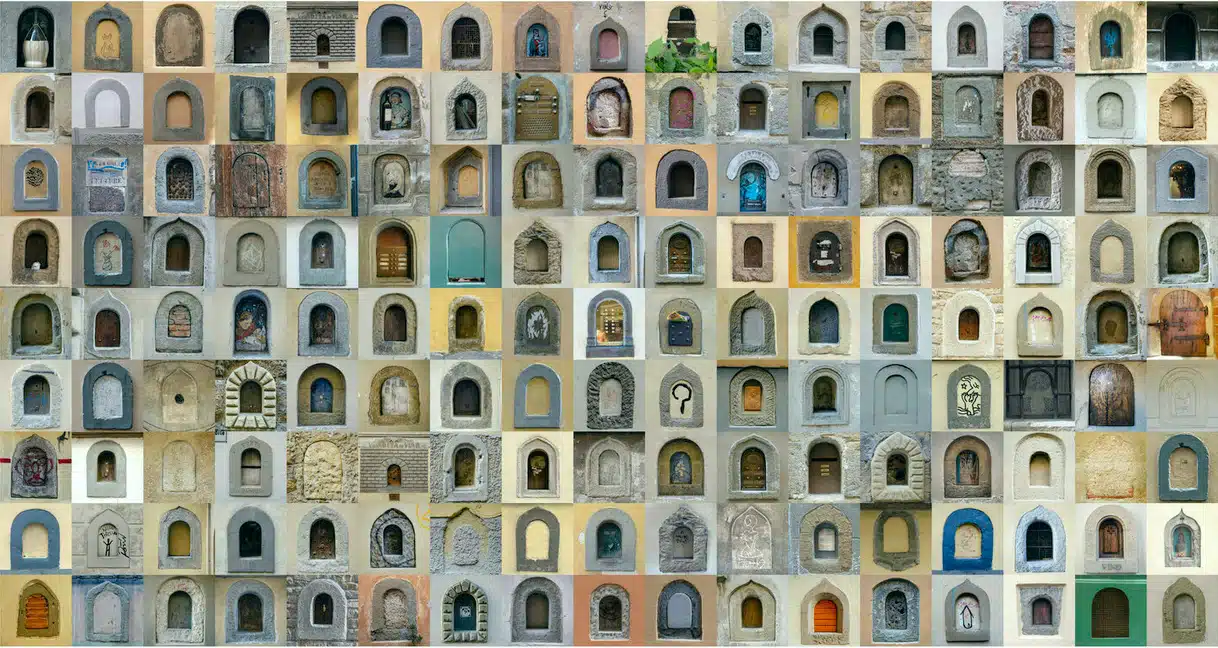Tiny Wine Windows: The Buchette del Vino
Walking through the historic center of Florence, it’s easy to come across buildings with small stone-framed doors at waist height, resembling miniature entrance doors, complete with latches. However, these are not doors but rather small openings used in the past to exchange wine with minimal contact, known as “tiny wine windows” (“buchette del vino.”)
The Origin of the Buchette del Vino
These small windows were created directly on the facades of noble palaces. Through these openings, wine producers could sell bulk wine directly to citizens, bypassing the taxes imposed on merchants and shops. Customers would bring their own bottles or flasks to be filled, allowing for a direct and tax-free exchange with the producers.
A Variety of Designs
Some of these openings are rectangular with rounded corners, while others feature an arched top. Made of stone or framed with decorative elements, they are often embedded in the serene stone walls of historic buildings. Each buchetta is unique, reflecting the architectural style of the palace it belongs to. Some still bear inscriptions or small metal knockers, revealing their original function and providing a glimpse into the past.
Over the centuries, social and economic changes gradually led to the decline of the buchette del vino. In the 19th and 20th centuries, the rise of retail commerce, wine shops, and dedicated stores rendered these small windows obsolete. Many were sealed, forgotten, or transformed into decorative elements. However, in recent years, interest in Florence’s cultural and historical heritage has sparked a revival of these unique wine windows.
Rediscovering a Lost Tradition
Since its founding in 2015, the Buchette del Vino association has been dedicated to rediscovering, cataloging, and promoting these historic openings. Thanks to this restoration effort, many wine windows have been carefully preserved and even restored to their original function, turning them into fascinating cultural and tourist attractions.
A Return to the Past
During the COVID-19 pandemic, the buchette del vino found an unexpected second life. During lockdown, the historic gelateria Vivoli revived the tradition by serving coffee, drinks, and gelato through its original wine window on Via Isola delle Stinche. The public response was overwhelmingly positive, inspiring three other businesses to follow suit. This unusual return to their historic use captured media attention and renewed interest in these once-forgotten structures.
How the Past Lives on Through the Buchette del Vino
Today, some buchette del vino are used to serve wine, coffee, gelato, and even cocktails, blending modern-day trends with their historical charm. These wine windows have become one of the most intriguing curiosities for tourists exploring Florence. Walking through the city’s historic center, visitors can spot these small openings in buildings along streets such as Borgo Pinti, Via delle Belle Donne, and Via del Giglio.
Many guided tours now include stops at the buchette del vino, offering visitors the chance to learn about their history and cultural significance. Some still feature plaques explaining their original function, while others have been converted into fully operational refreshment points, bringing this unique tradition back to life.
There are approximately 170 buchette del vino within the municipality of Florence—some well-preserved, others nearly invisible. Although often unnoticed, they remain an enduring testament to the city’s winemaking tradition and its deep connection to the countryside. Recently, some of these windows have been restored, allowing local businesses to revive the experience of enjoying a glass of wine or gelato through these centuries-old openings. The Florence municipality’s Open Data section even provides a published dataset listing the city’s remaining wine windows.
Today, the buchette del vino are more than just small openings in the walls—they are symbols of identity and resilience, proving that history can still thrive in the modern world. Whether you’re a history enthusiast, a curious traveler, or a wine lover, exploring the buchette del vino in Florence is an experience well worth discovering.
Cover image – author: Ph-Robbin-Gheesling Sito web Intoscana

